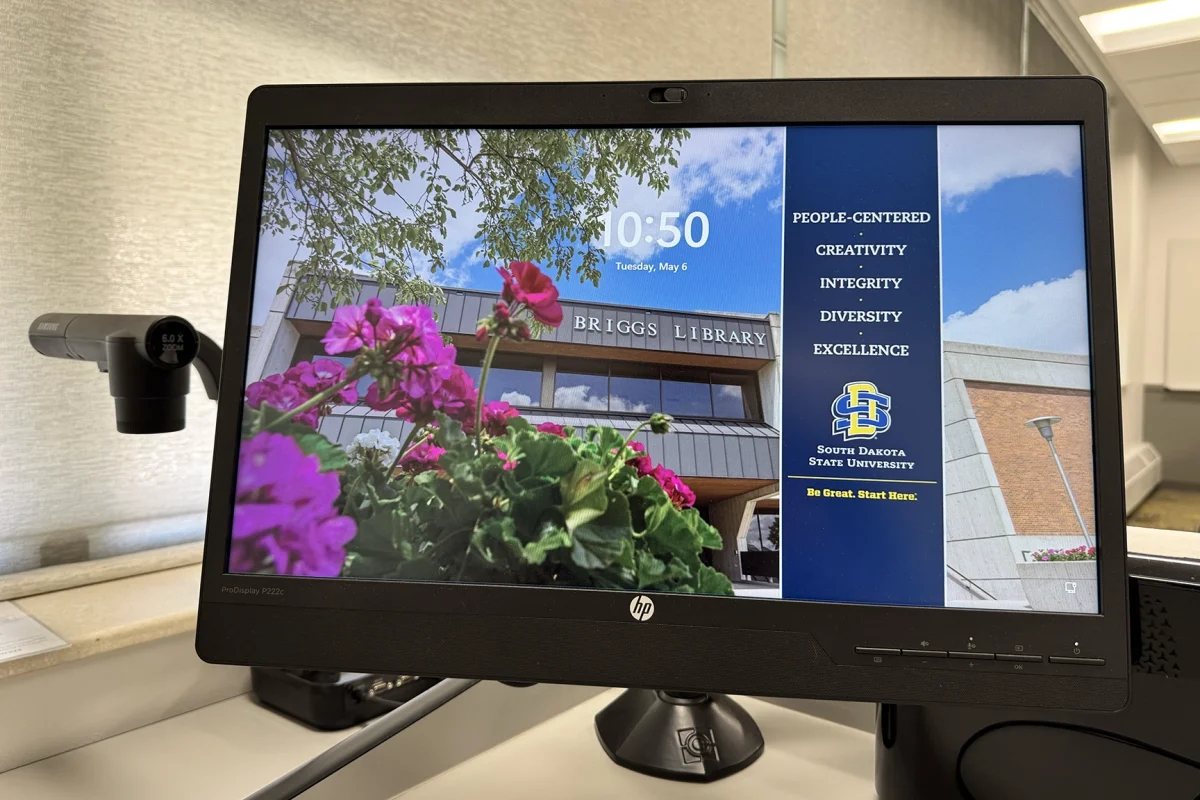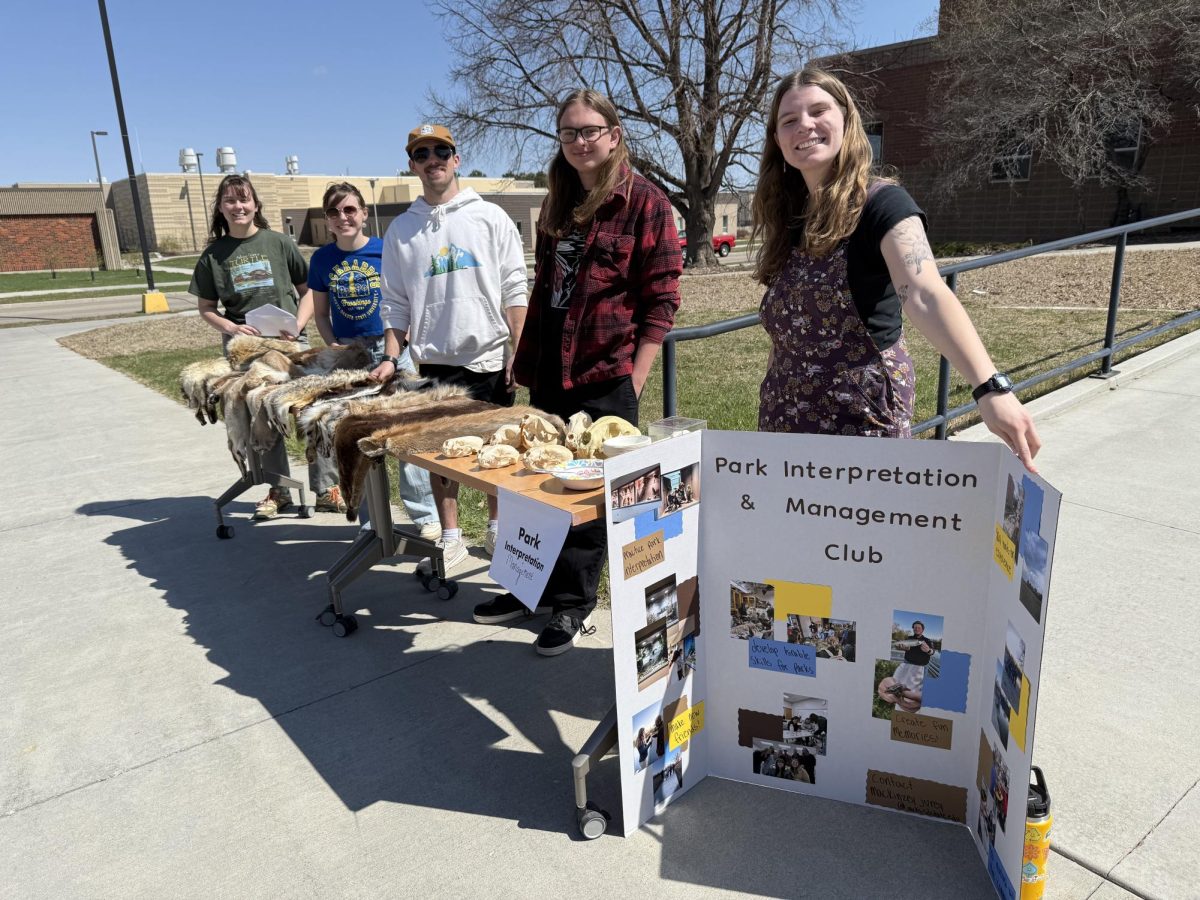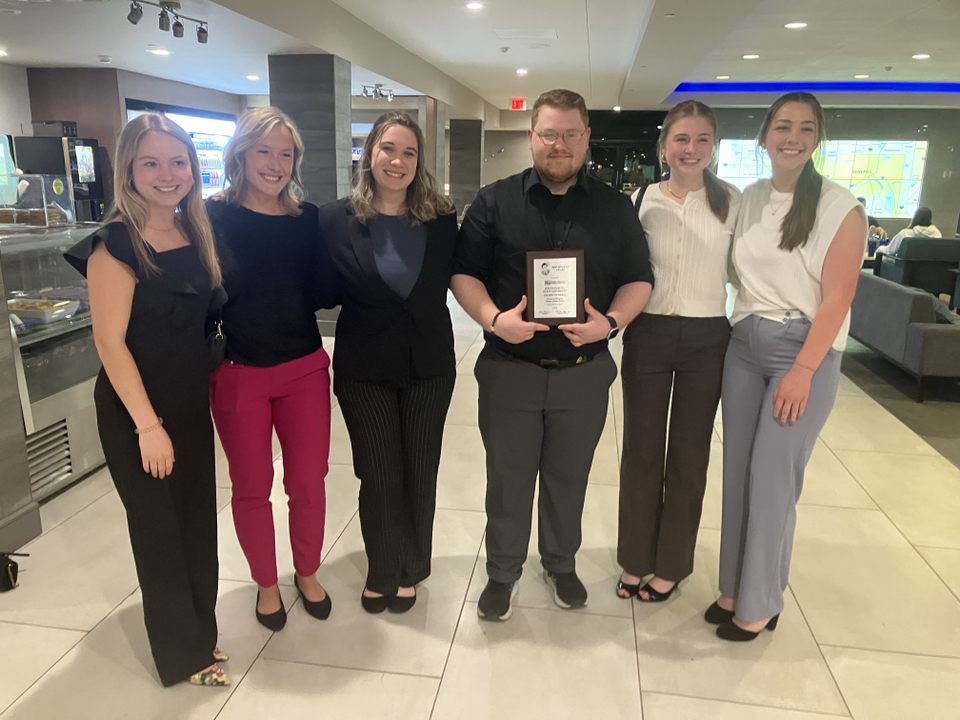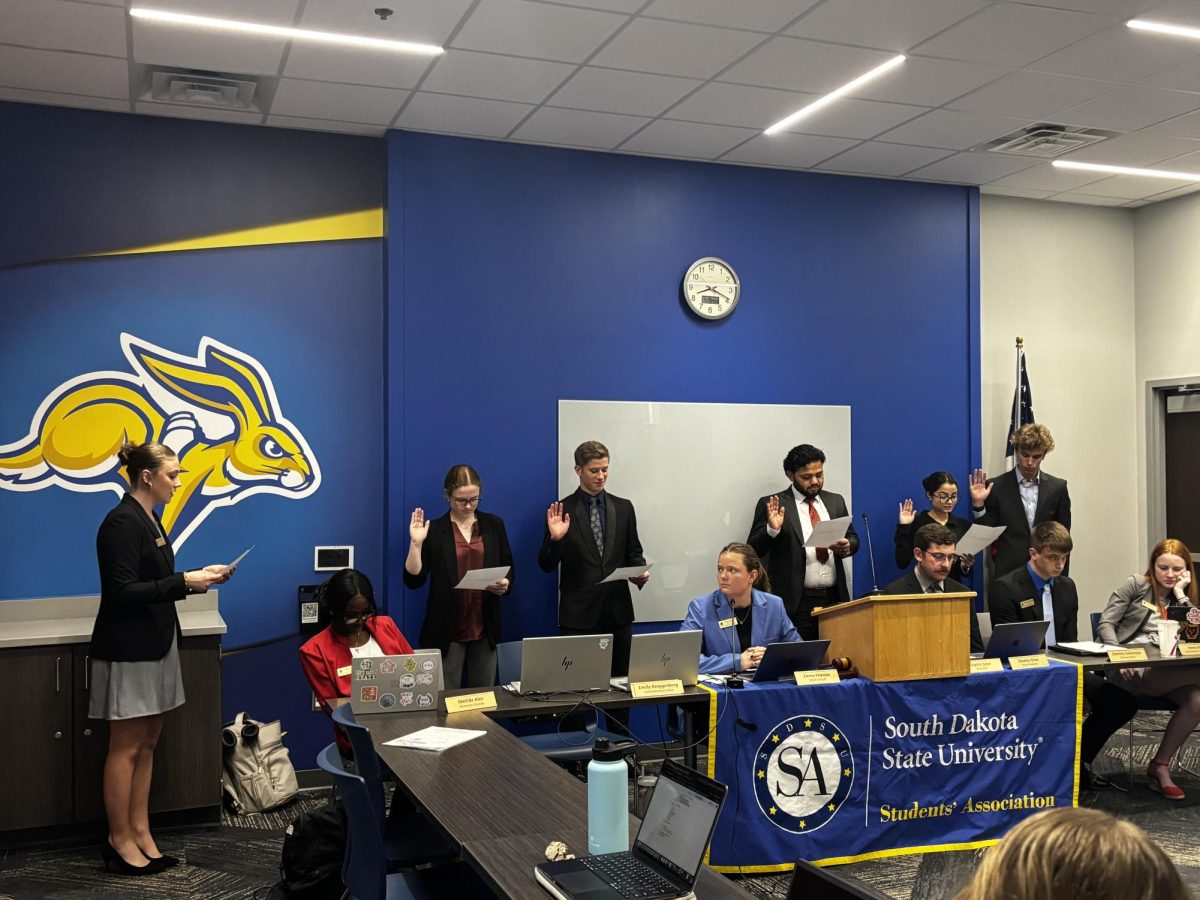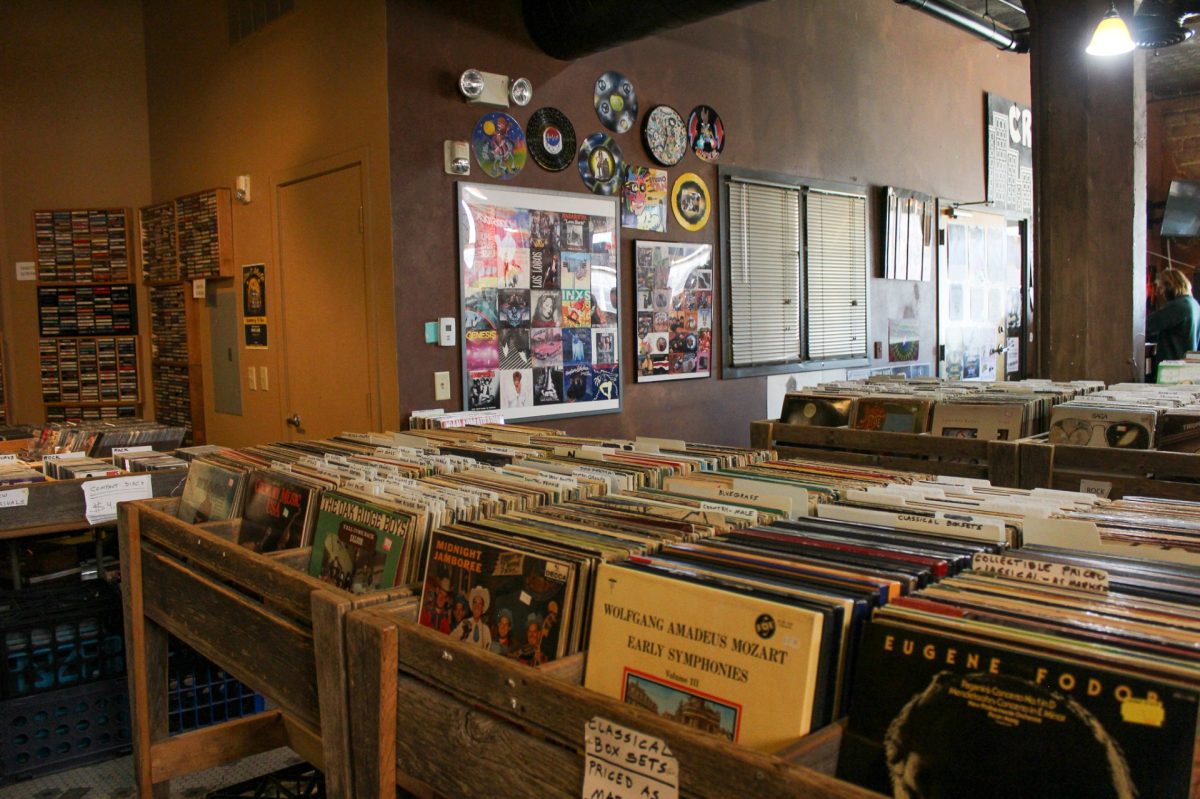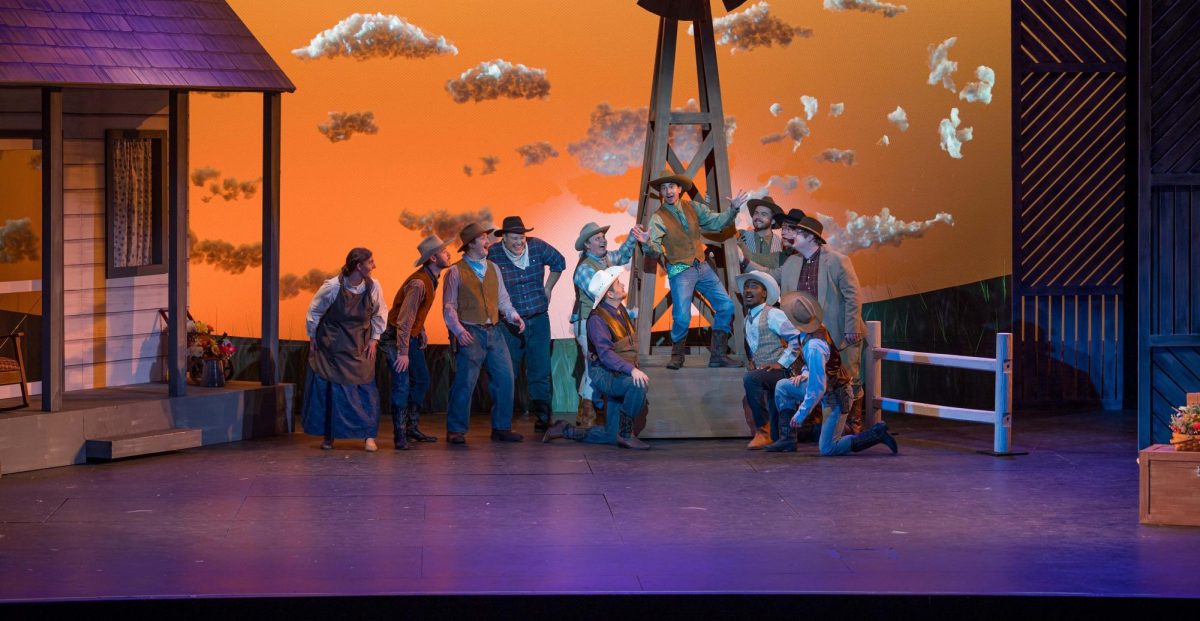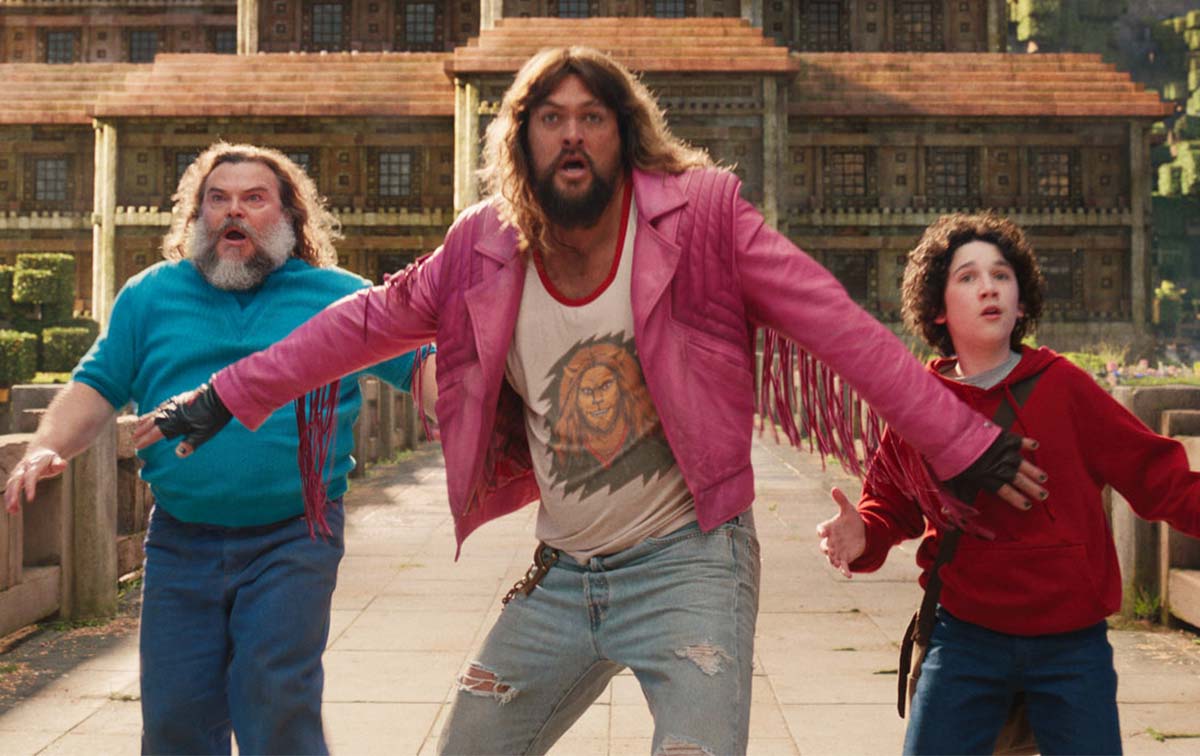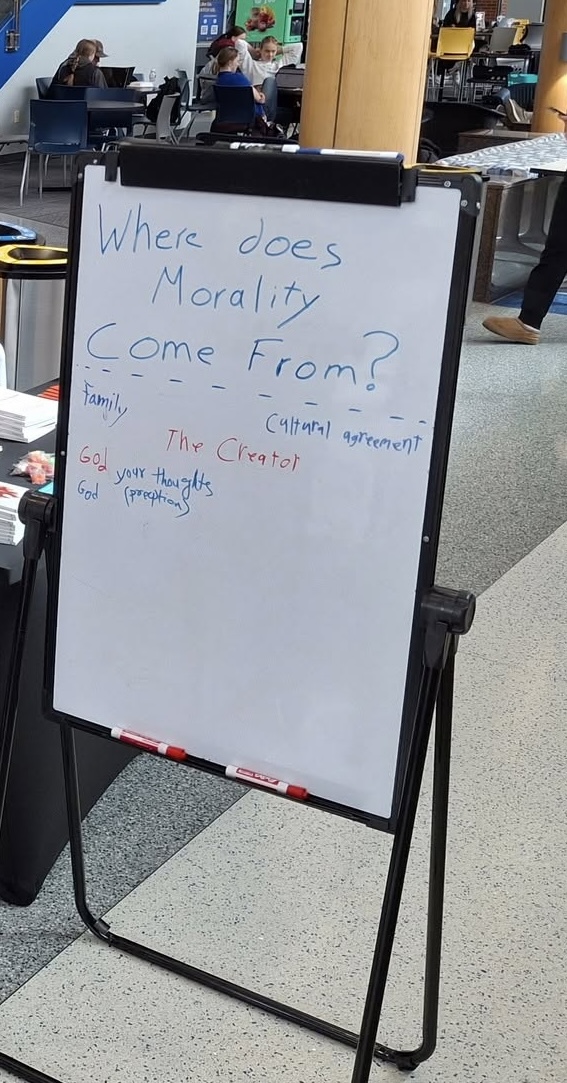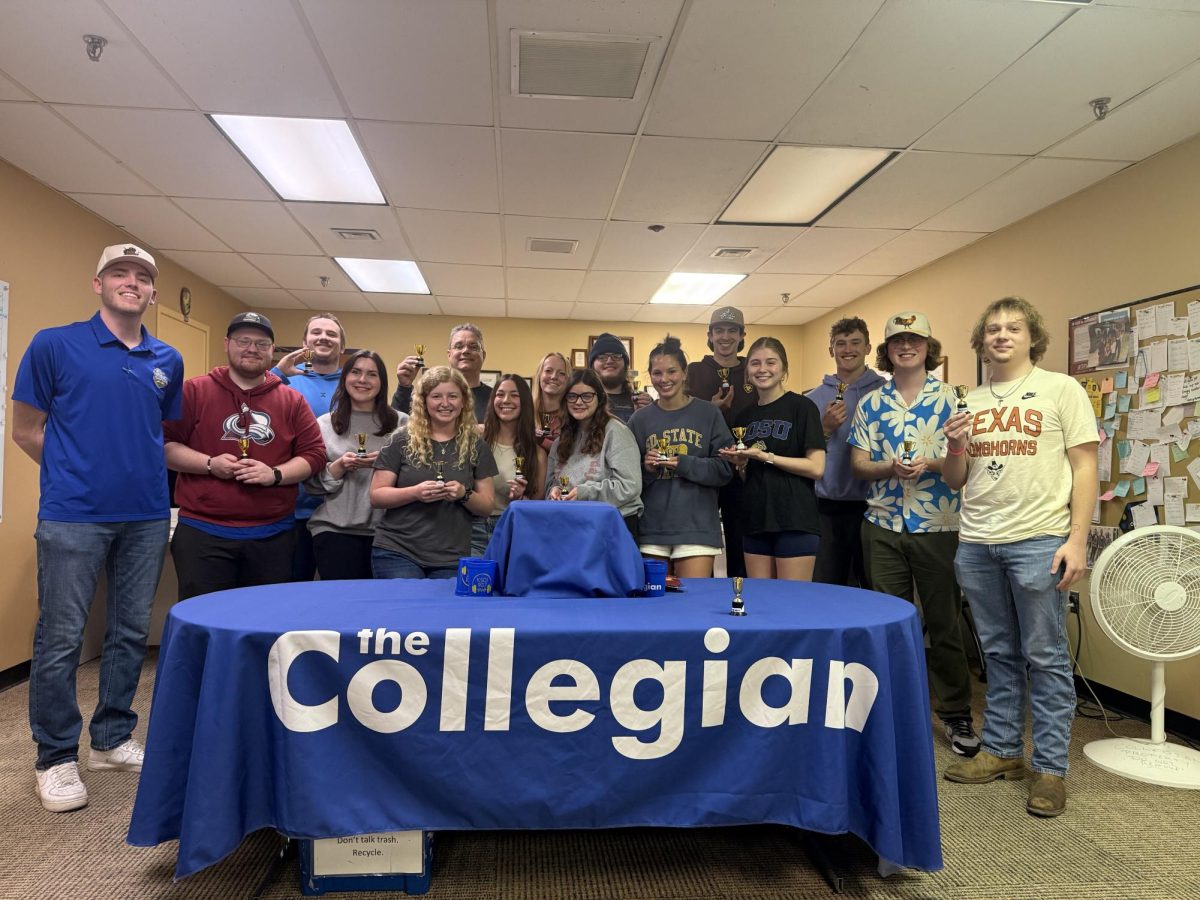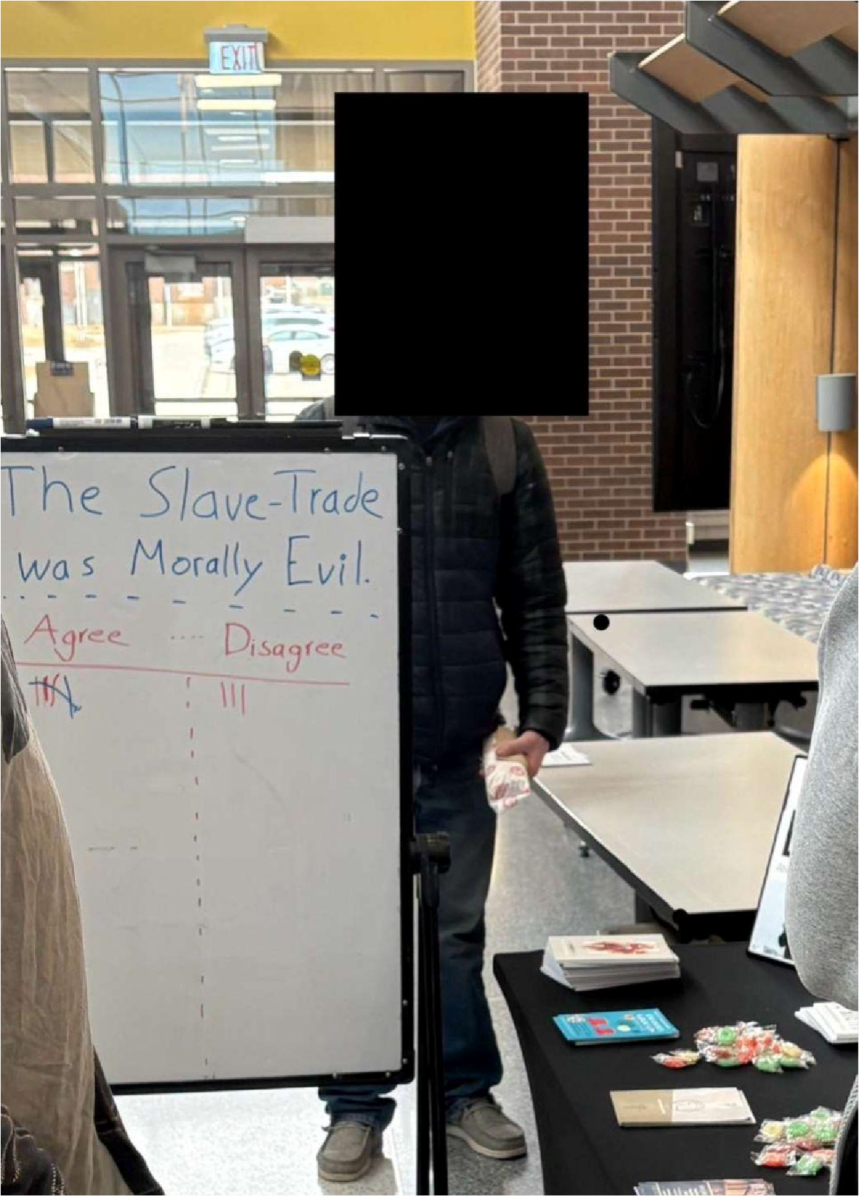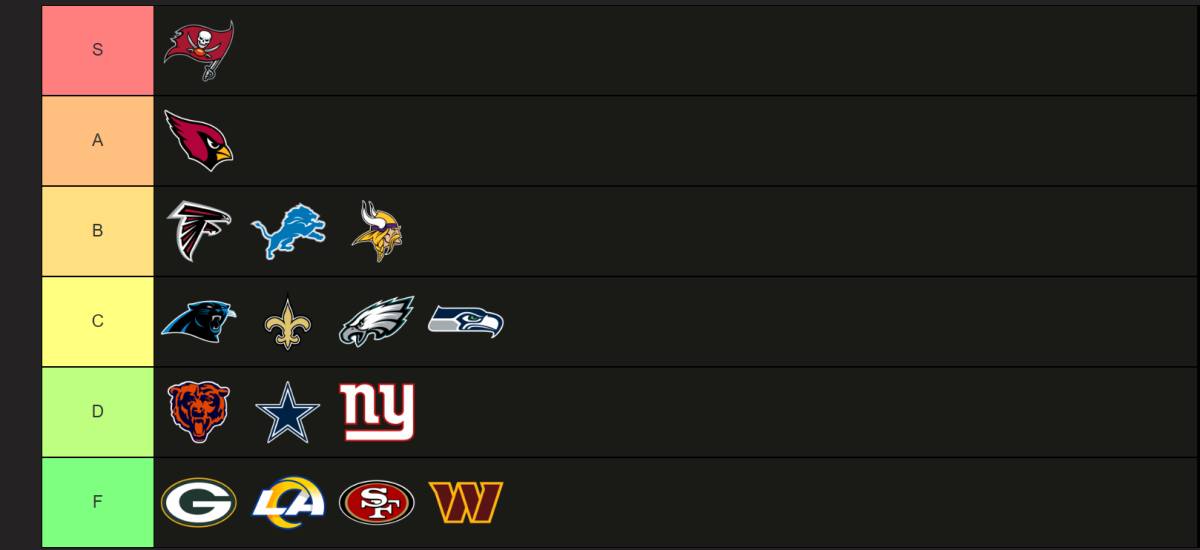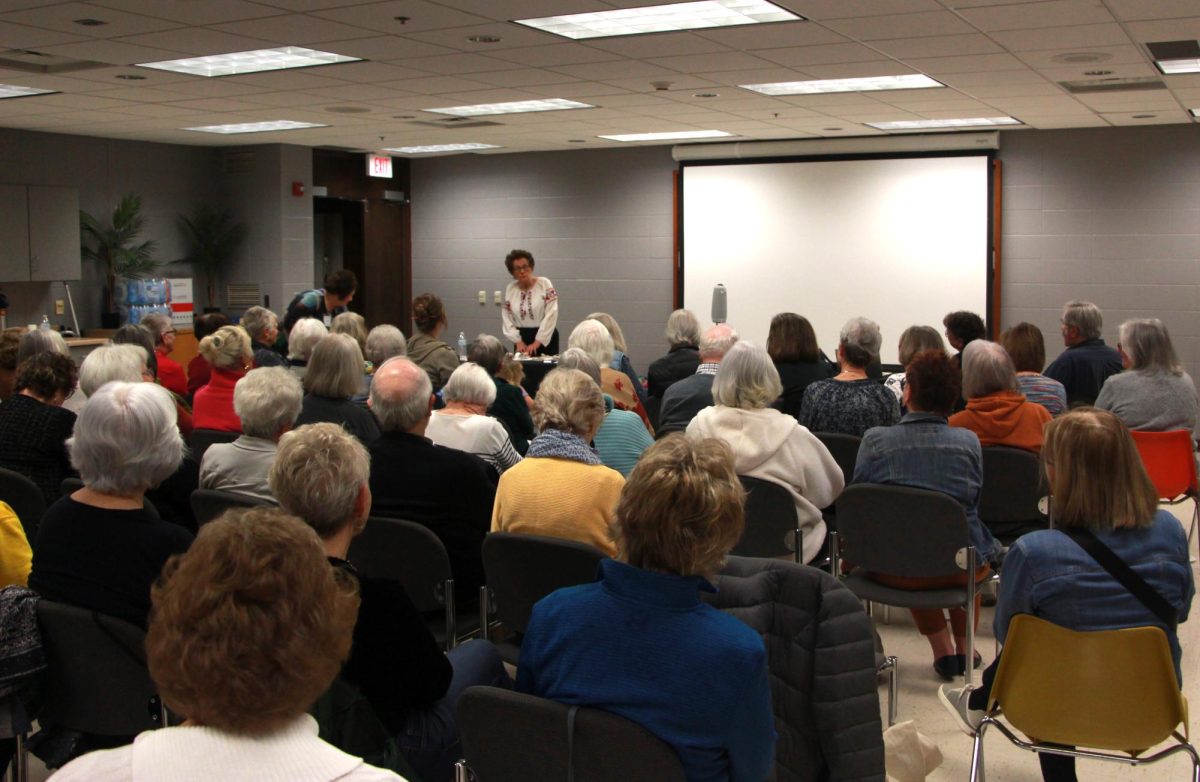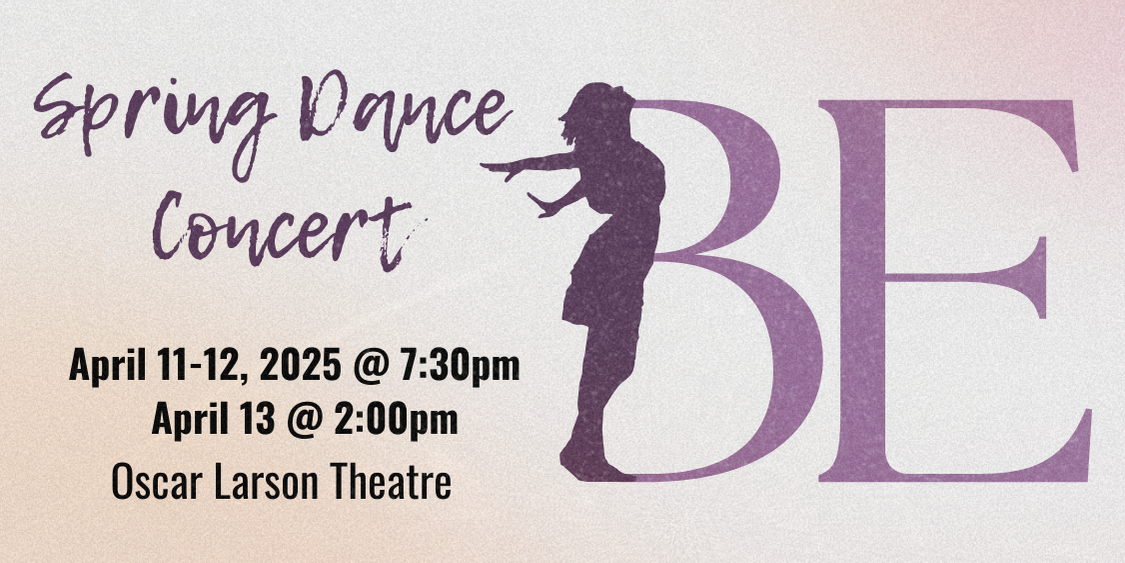The South Dakota Art Museum Guild hosted artist
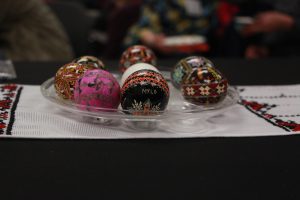
Lillian Hellickson’s discussion about the art of creating pysanky, otherwise known as traditional Ukrainian Easter eggs, on March 25.
Hellickson’s mother taught her how to create these colorful eggs when she was ten years old and has been keeping the tradition alive for 56 years in Brookings. The art of pysanky goes much farther back than Hellickson. Its origins traced to 988, when Ukraine
originally accepted Christianity.
Hellickson told attendees at the South Dakota Art Museum that there are numerous myths tied to these eggs. One myth depicts a monster chained up on a hill. Years when people didn’t make or share very many eggs loosened its chains, while years when a large number of eggs were made and shared, tightened them.
Hellickson begins with a plain egg.
The first step is drawing the intricate designs with a kistka, an electric pen designed for use on eggs. Each of the lines and shapes has a specific meaning tied to them. For instance, horizontal lines represent the suffering and death of Christ and triangles signify the holy trinity.
Once the designs are complete, she dips the eggs into dye made from vinegar, beeswax and charcoal. Hellickson then has a fresh layer to create more designs on, with two to seven layers featuring different colors and designs on each egg.
When the art is complete, she applies a gloss finish that protects the egg and enhances the images.
“I’m an artist, and I couldn’t do what she does with the precision she has,” Karen Kinder, a South Dakota Art Museum Guild member, said.
Despite her love for creating pysanky, Hellickson hasn’t been unable to create any new eggs for the last two years due to a battle with cancer, as well as an eye infection. But, she was thrilled to announce during her presentation that she began working on some new eggs last month, and while the process is a bit slower than it used to be, she is happy to be continuing her work once again.

